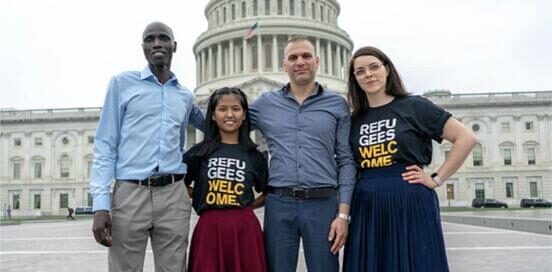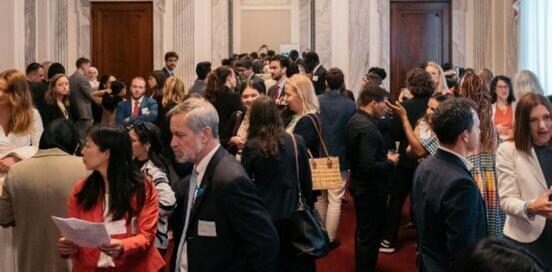Resettlement & Asylum
Who are forcibly displaced people?
Who are forcibly displaced people?
Refugee Council USA mobilizes expertise, ideas, and influence to protect the rights of all forcibly displaced people, or FDPs. Different populations that are forced to flee their homes include:
Refugees
Refugees are people who by definition are “unable or unwilling to return to their country of origin owing to a well-founded fear of being persecuted for reasons of race, religion, nationality, membership of a particular social group, or political opinion.” Refugees in the United States have a particular legal status and service provision, which you can learn more about here.
Asylum Seekers
meet the definition of a refugee as established in the Immigration and Naturalization Act, and ask for asylum in the United States rather than outside of it. There are two pathways to obtaining asylum in the US: the affirmative and the defensive process. Learn more about the asylum process here.
Internally Displaced Persons
Internally Displaced Persons are people who have been forced to flee their homes, in particular as a result of or in order to avoid the effects of armed conflict, situations of generalized violence, violations of human rights or natural or human made disasters, and who have not crossed an internationally recognized border.
Stateless Persons
Stateless Persons are people who, under national laws, are not citizens of any country.
Humanitarian Parolees
Humanitarian Parolees are allowed temporary entrance to the US due to an emergency and urgent humanitarian concern. Examples of populations who received humanitarian parole are Ukrainians and Afghans.
Special Immigrant Visa Holders
Special Immigrant Visa Holders qualify for lawful permanent residence because of their service with the US abroad. They meet requirements such as being employed in Afghanistan for a period of at least one year by or on behalf of the US government, have provided faithful services to the US government, and have experienced ongoing serious threat as a consequence of their employment. SIV holders have a pathway to citizenship.
Temporary Protected Status
Temporary Protected Status (TPS) is available for nationals of certain countries who are already in the US and their home country was designated for TPS due to a temporary country condition such as ongoing armed conflict or an environmental disaster. TPS is not a pathway to citizenship.
See the Process


Learn the steps individuals must navigate to be resettled as a refugee in the United States.


Learn the steps individuals must navigate to be resettled as an asylee in the United States.